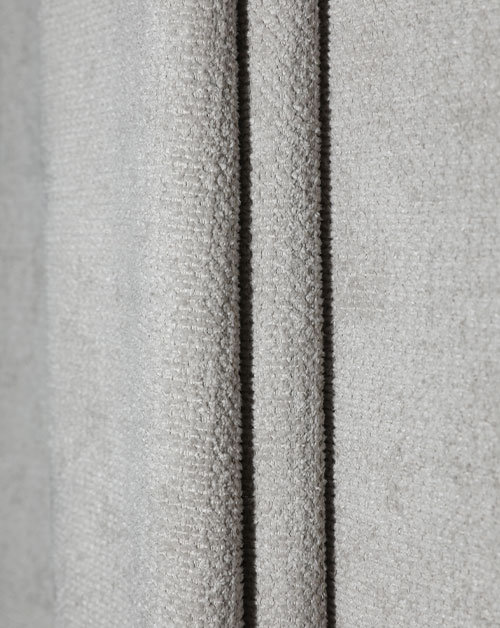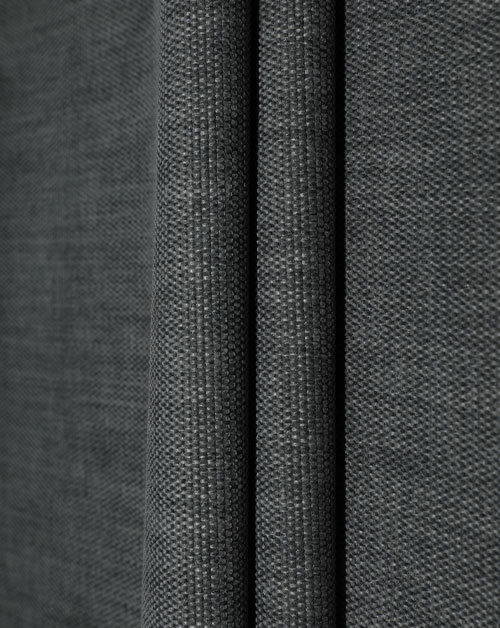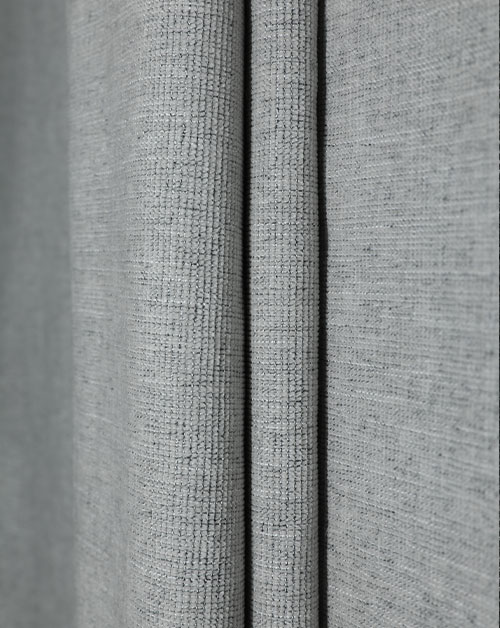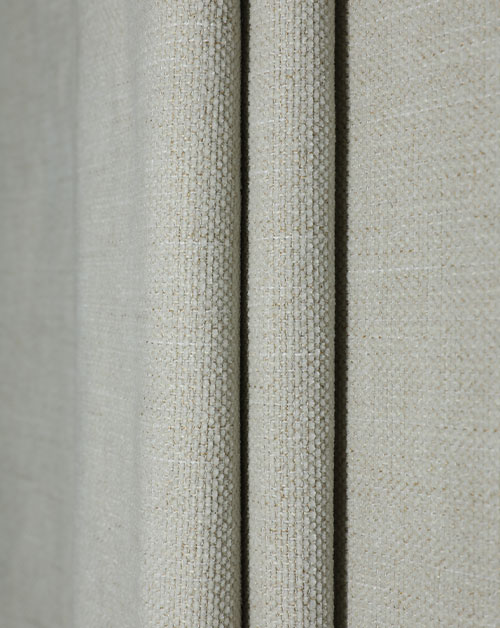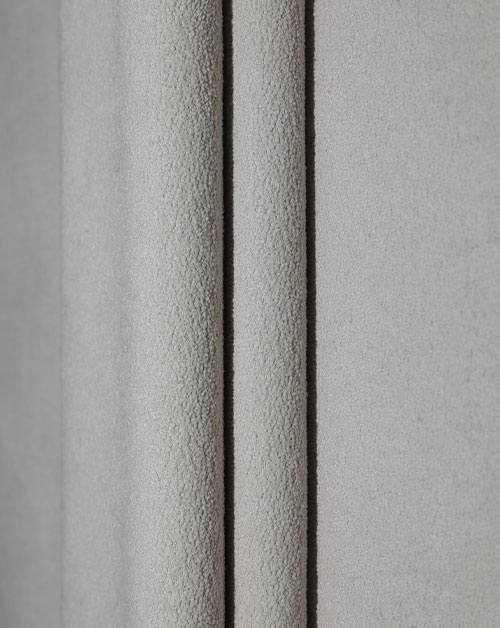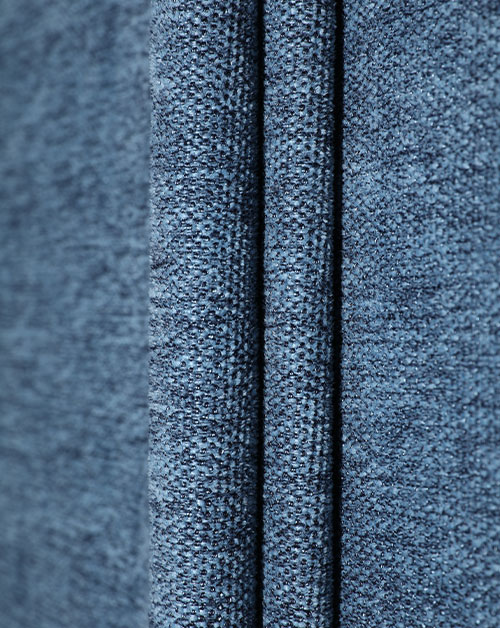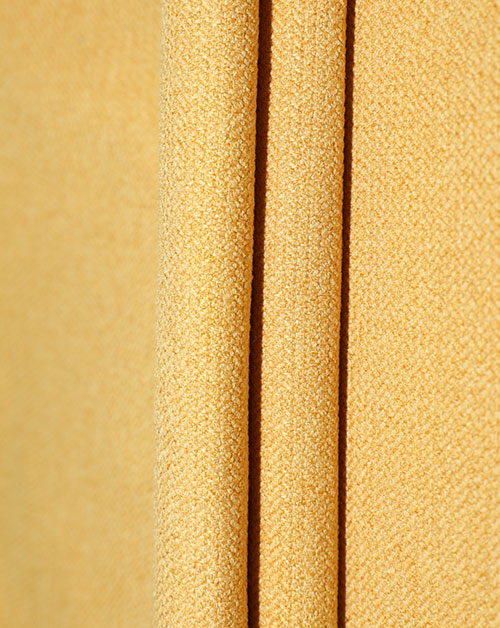The choice of fabric plays a crucial role in home decor, profoundly influencing a space's overall aesthetic. From sofas and curtains to cushions, every textile infuses your home with unique character and atmosphere. Thoughtful fabric choices can add comfort, texture, and color, transforming an ordinary space into a home filled with style and personality.
Fabric isn't just a functional element; it's a key determinant of style. For instance, silk and velvet create a luxurious and elegant feel, while linen and cotton provide a fresh, natural vibe. By skillfully mixing and matching different materials and patterns, you can effortlessly balance colors, create focal points, and even alter the perceived size of a room. Therefore, understanding different types of fabrics and their characteristics is the first step to creating a harmonious and appealing home environment.
Types of Home Decor Fabric
Upholstery Fabric
This type of fabric is primarily used to cover furniture like sofas, armchairs, and headboards. Because these items are used frequently, durability and wear resistance are top priorities.
- Linen and Cotton: These natural fibers are breathable and comfortable, perfect for creating a relaxed, cozy atmosphere. Cotton is easy to clean but wrinkles easily, while linen is known for its unique texture and drape, but it's not wrinkle-resistant.
- Velvet: Velvet is known for its soft, glossy, and luxurious feel. It adds depth and texture to a space, making it ideal for elegant and sophisticated decor.
- Leather: With its distinct texture, durability, and easy-to-clean nature, leather is a timeless choice. Over time, leather develops a unique patina that adds to its vintage charm.
- Microfiber: A synthetic fiber prized for its excellent stain resistance and durability. It's soft and comfortable, making it a perfect choice for homes with children or pets.
Drapery Fabric
Drapery fabric’s main functions are to control light and ensure privacy, while also adding a decorative element to windows.
- Sheer: Lightweight and transparent, sheer fabric allows soft natural light to filter in while maintaining some privacy. It's great for creating a light and airy, romantic feel.
- Blackout: This fabric effectively blocks out light, making it ideal for bedrooms or rooms where strong sunlight needs to be avoided. It is often heavier and provides some sound and heat insulation.
- Linen and Velvet: Linen curtains offer a natural, casual feel, while velvet curtains, with their heavy drape, add a sense of luxury and are better at insulating against light and noise.
Fabric for Pillows and Cushions

Pillows and cushions are quick ways to add comfort and style to a space. The fabric choices for them are more varied and can be changed with the seasons or your mood.
- Cotton and Silk: Cotton pillows are skin-friendly and easy to care for, while silk offers a smooth feel and brilliant sheen, perfect for adding a touch of luxury.
- Velvet: Velvet pillows add rich texture and a sense of warmth to a sofa or bed.
- Outdoor Fabric: Specially treated to be water-resistant, fade-resistant, and mildew-resistant, these fabrics are the perfect choice for cushions on patios or balconies.
Outdoor Fabric
Outdoor furniture fabric needs to withstand sun and rain, so weather resistance and durability are crucial.
- Acrylic: A high-performance synthetic fiber with excellent UV resistance and waterproofing. Its color won't fade easily.
- Polyester: Polyester fabrics are generally durable and wrinkle-resistant, and they are relatively affordable. Many outdoor polyester fabrics are also treated to be waterproof and UV-resistant.
Factors to Consider When Choosing Fabric
Choosing the right home decor fabric requires considering several factors to ensure it's both beautiful and functional.
Durability and Usage
A fabric's durability should match its frequency of use and location.
- High-Traffic vs. Low-Traffic Areas: For high-traffic areas like the living room sofa, choose durable fabrics like microfiber, leather, or heavy-duty canvas. For low-traffic areas like a bedroom headboard, you can opt for softer, more delicate fabrics like velvet or silk.
- Pet-Friendly and Kid-Friendly Options: If you have pets or children, choose fabrics that are easy to clean, scratch-resistant, and stain-resistant, such as microfiber or certain treated synthetic fabrics. Darker colors or patterns also help hide stains.
Color and Pattern
The color and pattern of a fabric are key to defining a room's atmosphere and style.
- Matching Existing Decor: Choose fabrics that harmonize with your wall color and furniture style to create a cohesive look.
- Creating a Focal Point: Bold patterns or bright colors can serve as a room's visual focal point, such as a uniquely patterned curtain or cushion to break up a monotonous space.
Texture and Feel
Fabric texture adds depth and interest, while the feel directly impacts comfort.
- Comfort and Aesthetics: Consider how the fabric feels against your skin. For example, linen and cotton feel cool, ideal for summer, while velvet and wool are warm and cozy, better suited for winter.
- Seasonal Considerations: You can change pillow covers or curtains with the seasons, using light cotton or linen for summer and heavy velvet for winter, allowing your home to change with the weather.
Budget
When choosing fabric, it's important to balance cost and quality.
- Balancing Cost and Quality: High-quality fabrics are often more durable but come with a higher price tag. Consider which areas are worth investing in and where you can choose a more economical alternative. For example, invest in a durable sofa fabric but opt for more affordable pillow covers.
- Sales and Discounts: Many home goods stores and fabric shops offer sales during seasonal changes or holidays, which is a great time to buy high-quality fabric at a discount.
Popular Home Decor Fabric Patterns
Beyond material and color, a fabric’s pattern can significantly impact a space’s visual effect and style.
Floral Patterns
Floral patterns are a classic and romantic choice for home decor, bringing life and vitality into a space. Whether small floral prints or large blooming flowers, they add a soft, natural atmosphere to a room. This pattern is suitable for various decor styles, from cottagecore to vintage.
Geometric Patterns
With their modern and avant-garde characteristics, geometric patterns are perfect for modern and contemporary homes. From simple stripes and dots to complex diamonds and hexagons, geometric patterns can add visual interest and a sense of structure, making a space feel more dynamic and designed.
Stripes and Checks
Stripes and checks are traditional and versatile patterns that bring order and balance to a space.
- Stripes: Thin stripes create a refined and elegant atmosphere, while wide stripes feel bolder and more casual. Vertical stripes can visually raise a ceiling, while horizontal stripes can make a room feel wider.
- Checks: Patterns like plaid or gingham bring a warm, cozy, traditional feel, making them ideal for farmhouse or English-style decor.
Solid Colors
Solid-colored fabrics are a timeless and elegant choice, serving as the perfect backdrop for all other patterns and textures. Solid fabrics are easy to coordinate with other decor elements and bring a calm, understated beauty to a space. By using solid fabrics of different materials (e.g., cotton, velvet), you can still create rich layers of texture.
DIY Home Decor Projects with Fabric
If you want to add a personal touch to your home, making small items with fabric yourself is a fun and economical option.
Pillow Covers
Making pillow covers is one of the simplest and most affordable DIY projects. With just a few fabric choices and basic cutting and sewing skills, you can give your sofa or bed a fresh look. This not only allows you to customize your space's style but also lets you easily change it with the seasons or your mood.
Curtains and Drapes
Making your own curtains or drapes gives your home a more personal touch and is often more cost-effective than buying ready-made ones. You can choose the perfect fabric—whether it's light sheer or heavy blackout—based on your window size, room style, and personal preference.
Upholstering Furniture
For more experienced DIY enthusiasts, re-upholstering furniture is an advanced project that can completely transform old pieces. You can choose a unique fabric to give an old chair, sofa, or ottoman a new life. This process not only results in one-of-a-kind furniture but is also a deeply rewarding experience.
Where to Buy Home Decor Fabric

Finding the right fabric is the first step to bringing your decor ideas to life. Here are some common places to buy fabric, each with its own pros and cons.
Online Retailers
Pros and Cons
- Pros: A huge selection of fabrics in various materials, colors, and patterns. You can easily compare prices to find the best deals.
- Cons: You can't physically touch or feel the fabric's texture, weight, or hand, which is crucial for comfort. The actual color may also differ from what you see on screen. It's best to order a swatch first.
Popular Online Stores
Many general home goods websites or specialized fabric sites offer a wide range of options.
Local Fabric Stores
Pros and Cons
- Pros: You can see and feel the fabric in person. Store staff can offer expert advice on fabric selection, sewing, and care. Shopping locally supports community businesses.
- Cons: The selection is typically more limited than online stores, and prices may be higher due to operational costs.
Discount Fabric Outlets
Pros and Cons
- Pros: A great place to find high-quality remnant or discontinued fabrics at a lower price, perfect for budget-conscious DIY projects. You might discover unique fabrics that are hard to find elsewhere.
- Cons: You need to inspect fabrics carefully for flaws. Stock is often limited and may not be replenished.
Maintaining Your Home Decor Fabric
Properly caring for your fabric can extend its lifespan and keep your home decor looking fresh.
Cleaning Tips
- Spot Cleaning vs. Professional Cleaning: For small stains, try spot cleaning with a mild cleaner. For larger stains or valuable fabrics, it's best to seek a professional cleaning service to avoid damage.
- Fabric-Specific Cleaning Methods:
- Linen and Cotton: Can usually be machine washed, but avoid high-heat drying to prevent shrinking.
- Velvet: Use a soft brush to gently remove dust and a vacuum with a soft brush attachment. Steaming is ideal for velvet.
- Leather: Regularly wipe off dust with a soft cloth and use a specialized leather conditioner for maintenance.
- Synthetics: Most synthetic fabrics are easy to clean and can be machine washed or wiped with a damp cloth.
Protecting Your Fabric
- Sun Protection: Prolonged exposure to sunlight can cause fabrics (especially natural fibers) to fade and deteriorate. Use blackout curtains, blinds, or close the curtains during peak sunlight hours to protect your fabrics.
- Stain Repellents: For new fabric furniture, consider using a fabric protector. It creates a protective layer on the surface, making it more resistant to stains and easier to clean.
Conclusion
Choosing the right home decor fabric is key to creating a home that is both beautiful and functional. From durable upholstery to soft drapery, every fabric contributes a unique style and comfort to your space. Hopefully, this guide helps you better understand different types of fabrics and provides inspiration for your future home decor projects.
Remember, decorating your home is a process of self-expression. Be brave and explore different materials, colors, and patterns. Choose fabrics that truly reflect your personality, making your home a space that is uniquely yours.

 English
English 中文简体
中文简体 русский
русский عربى
عربى